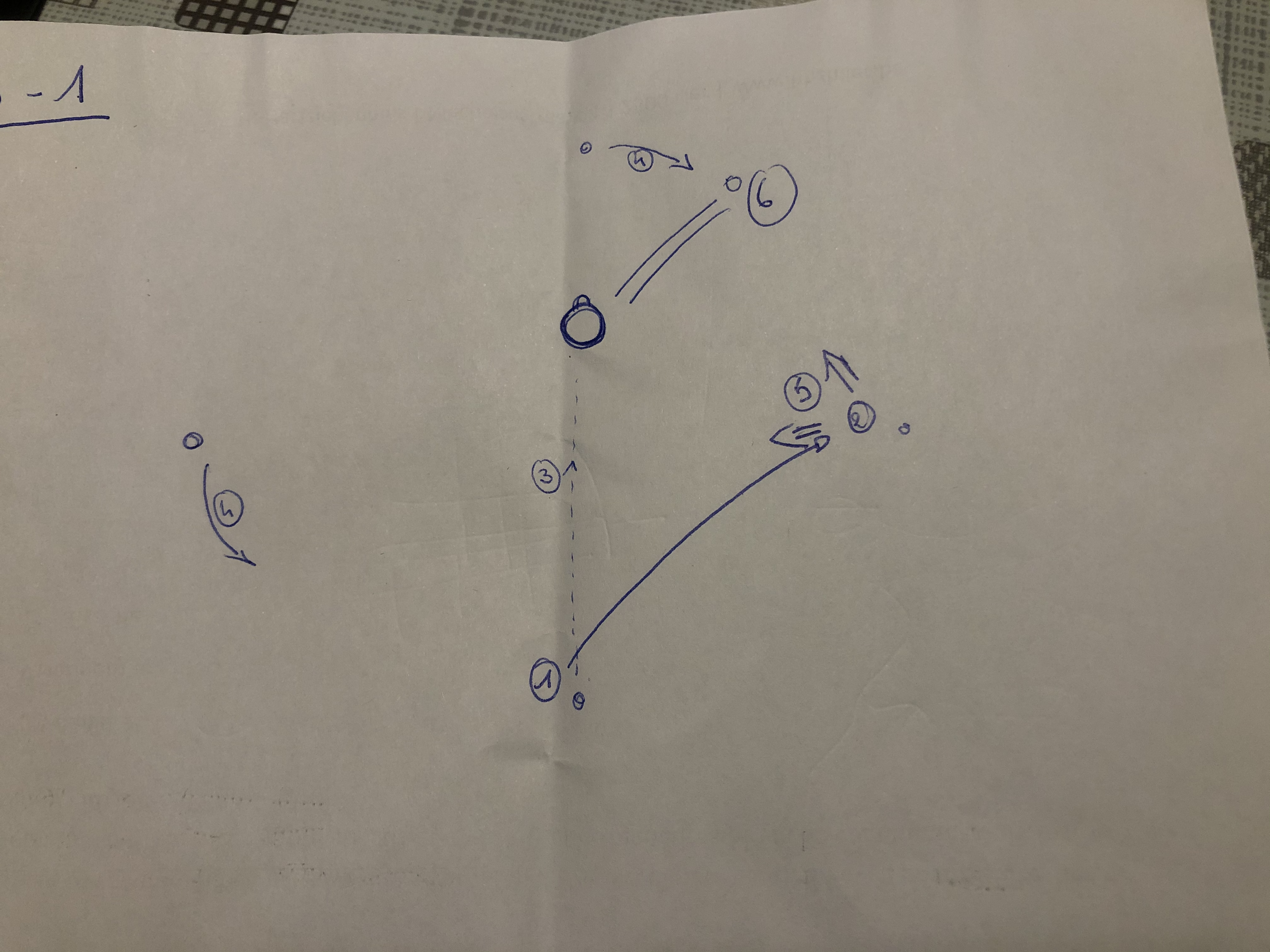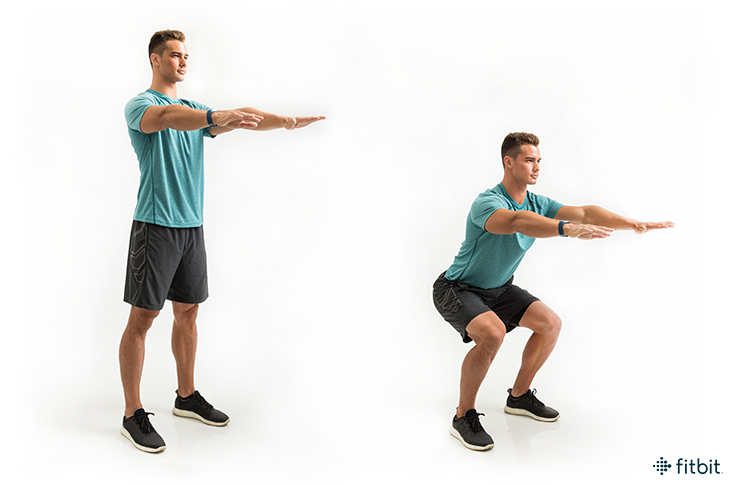Korfball drills
- Principle as stealing games but then persons.
- Everyone starts shooting, at two consecutive scores one person may be taken from another pole.
- The pole with the most people wins after a while / everyone wins (mainly the starters of this pole) when everyone is at a pole.
Progressive series of exercises: 1.1
- Start in normal diamond position.
- Person(1) on top gives to Person (2) side field.
- Then Person (1) runs to the rebound.
- While persons (3,4) walk towards person (2),
- who plays one of them and this one gets open space to shoot.

- The taker gets played late.
- The defender is right behind him.
- Take it easy. If the defender's back. Looking for the arm...
Goaltender throws to forward goes after the ball for:
- pass
- dodge
- shot
Bitch catches and throws to opposite side etc. With 2 balls at the same time.
Inshort: practise all kinds of forms of the shot from a supporting position.
Organisation: pairs per basket, always one person under the basket and one person in front of it. Change after about 1 minute.
a ) One person in front of the basket at about 6 meters, the shooter stands under the basket. The shooter starts away from the basket (backwards), gets the ball and shoots immediately. The striker catches the ball.
b ) As exercise a., but the shooter only threatens with a shot, lets the defender jump in and then continues with an "underhand pull ball": a kind of private penalty throw from about 5 meters diagonally behind the basket. The Germa-ball - so called by me after Germa Woldhuis of Nic. who had success with this on a regular basis - is practised here. The server catches the ball.
c ) The starting situation is the same, but the shooter now gets a defender with him (some pairs cancel each other out). The defender's task is to decide which of the two possibilities (a. or b.) the attacker will get: either he reacts deliberately too late (after which a shot must follow), or he follows the shooter too closely (thus giving the opportunity for an underhand draw). In exercises d., e. and f., the attacker plays free with one simple movement. An efficient way, which requires however a lot of technique (and thus practice).
- In a hat 1 passer
- Other hat attacker and defender
- Offender moves towards the pass. Defender follows briefly behind. Offender decides when to go inside.
- Defender allows the pass
- Defender tries to prevent
- Defender tries to tackle
One passer, one attacker and one defender with the ball on the pilon. Offender takes ball from pilon and crosses right in front of it for a through ball.
- Then allow
- Light pressure
- Blocks
- Put four caps around the basket at a distance of 4 meters.
- 1 in front 2 on either side of the basket and 1 behind the basket.
- The players at the front/back are 1 team and the player on either side of the basket are 1 team.
Option 1:
- A shot is taken by a random player all 4 players try to grab the rebound.
Option 2:
- There is shot by a random player all 4 player try to grab the rebound.
- Once the ball is caught by a player he has 2 choices: He shoots the ball directly at the basket himself or he places the ball directly on his teammate and he takes the shot.
- Play freely but see practice back.
- 3 x interceptions change
- score interception off
- Stand with the front of your feet on an elevation (such as a step) and lower your heels as far as possible so your calves are properly stretched.
- Now slowly stand on your toes. All the weight is now resting on your toes and you can feel your calves contracting.
- Slowly lower yourself back to the starting position.
- Doing this exercise slowly will work your muscles more effectively--you won't get the same effect by jumping up and down at a fast pace.
- Check yourself by keeping track of time; each repetition should last no less than 6 seconds total.
- Repeat this exercise as many times as you can. Twenty reps is fine to start with.
- The basic squat.
- Place your feet hip-width apart and keep your feet on the ground.
- Slowly lower yourself as far as you can by bending your knees--keep your back as straight as possible and keep looking forward.
- Come back up to the starting position. Begin with 3 sets of 10 squats.
- Squats with weights.
- Place your feet hip-width apart and place two handbells on the floor between your feet (start with 2.5kg - 4kg, depending on what you can handle).
- Kneel down as you would for the basic squat and grasp the weights.
- Then stand with the weights in your hands and let them hang by your sides.
- Lower yourself back down.
- Repeat. Do 3 sets of 5 repetitions.
- Jump up from the squat.
- Stand with your feet hip-width apart and bend your knees until your thighs are parallel to the ground (no deeper). Instead of coming up slowly, jump up with force from the kneeling position and try to turn 180 degrees.
- As you land, sink through your knees again into a squat position--spring with the movement and try not to land straight up.
- Repeat and keep changing directions while jumping so you don't get dizzy (so turn right the first time and left on the next jump, and so on). Start with 3 sets of 5.

Skipping Ropes. It seems almost too obvious to be true, but regular rope jumping exercises the muscles you need for a vertical jump. To do this, use a hard surface with plenty of room for the rope in all directions. Try to exercise for 15 to 20 minutes a day.
- Do not jump with one, but with two feet at the same time.
- Train to jump faster and faster. Start slowly with a hop between each jump to keep your balance. When you notice that you are getting better at rope jumping, drop the hop and spin the rope faster.
- If you want to do something other than jumping rope, try running up and down stairs. This is a similar workout and exercises many of the same muscles.








